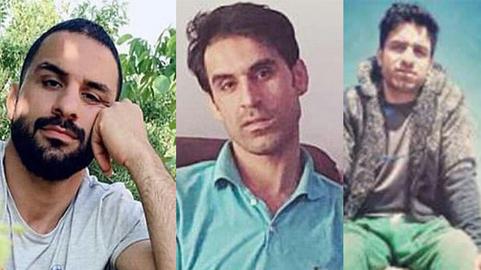An award-winning photojournalist who fled Iran in fear for his life says many young Iranians working for Iran's state-sponsored press are now working "under the table" to ensure the truth about their country is made known.
Reza Deghati, 68, took his first photographs aged 14 and would "publish" his photos in secret by fixing them to the gates of Tehran University during the reign of the last Shah of Iran. Like scores of other journalists he faced brutal suppression both in the Shah's time and in the new Islamic Republic after 1979, which forced him to leave his country of birth for Paris in 1981.
IranWire's new documentary, Iran's Bloody Friday: A Photographer Remembers, sheds light on the untold story of two young journalists who had to do the same. Javad Montazeri and Asieh Amini doggedly published photographs and reports about the July 9, 1999 attack by the security forces on Tehran University dormitory, during which a number of students were killed, and the clashes on the streets that followed. For their efforts, they were harassed and intimidated by the authorities and eventually decided to begin a new life in Europe.
The incidents related in the film took place after the election of President Mohammed Khatami, which ushered in a fleeting period of hope that real democratic reforms might follow in Iran. Deghati tells IranWire that on viewing the film, he was struck by the relative freedom Montazeri and Amini seemed to have enjoyed – despite the danger they were in.
"After the Revolution," he said, "we had a few months of total freedom. We photographers were going around and taking pictures, and everybody was happy and praising us for what we were doing. But three months later, the government suddenly had a total change of heart – against journalists. This came from [Supreme Leader] Khomeini himself."
Amid the brutal crackdowns on dissenters in the early 1980s, he said, "they were coming out with sticks and heavy chains in their hands, attacking journalists, photographers and cameramen. They were killing anybody with a camera on the streets. The government had forbidden me personally from going outside with my camera. We found ourselves beaten up in the streets, arrested, our cameras broken... When I watched the documentary, I thought ‘Oh my God, they had so much more freedom to work. This is mild’."
As a young man in pre-revolutionary Iran, Deghati's photographs of poverty and degradation had seen him arrested and jailed for three years, during which he was held in a small cell and tortured "24 hours a day" for five months. When the Islamic Revolution took place he began sending pictures to international titles, including of the persecution of Iran's Kurdish, Turkic and Baluch communities, via the news agency Sipa Press. The photos were published under the name "Reza" — then the most common male name in Iran — to keep his identity secret.
But in 1981, Deghati was told his name had appeared on a "hitlist." "I was 26 or 27 years old when I heard I could be killed," he said. "So I fled Iran and I have never been back."
In those days, he says, journalists and photographers were targeted simply because the tools of their trade were visible in public: “Forty years ago, when you were working in the streets, nobody but a photojournalist had a camera. Nobody had a mobile phone to take pictures with. In those years, if you had a camera that wasn’t hidden in your pocket or under your vest, everybody came over and asked why. Almost 80 percent of people were pro-Islamic Republic."
In France, by contrast, he said he was "received like an artist" and immediately found work. Since settling in Paris, Deghati's assignments have taken him to almost 100 countries and seen his images published in the pages of National Geographic, Newsweek and Time Magazine. In the 1990s he served as a consultant to the United Nations in Afghanistan and later founded a non-profit dedicated to empowering Afghan citizens through the media. But despite being recognized for his humanitarian work across the globe, he never lost sight of the crippling difficulties faced by young journalists in Iran.
"Now in Iran," he says, "if someone writes just one word that’s not right they can be punished. This regime won’t allow any form of evolved journalism. It’s not possible to be a serious photojournalist in Iran at the moment. There is no way you can do it because we don’t have a press anymore with the capacity and finance to give a decent salary or job to a photographer."
But there is hope, Deghati says, as many of those forced to self-censor by day in their work for Iranian state-controlled news agencies such as Mehr and Tasnim are also making use of new technologies to publish important, high-quality content. "I’ve contacted many photographers in Iran through social media and email," he says, "and they are all ‘hidden’ students.
"Nobody knows they’re working with me and nobody knows I’m teaching them. Some of those working for government agencies actually do work under the table, using their government accreditation to do really fantastic work, but not showing it. A couple of them have pseudonyms. They send their pictures to others in London or New York."
Related coverage:
Iran's Bloody Friday: An IranWire Film
Veteran Photographer: Political Coverage in Iran is Finished
"These Photos Belong to History": Exiled Journalist Remembers the Tehran University Siege
visit the accountability section
In this section of Iran Wire, you can contact the officials and launch your campaign for various problems


























comments